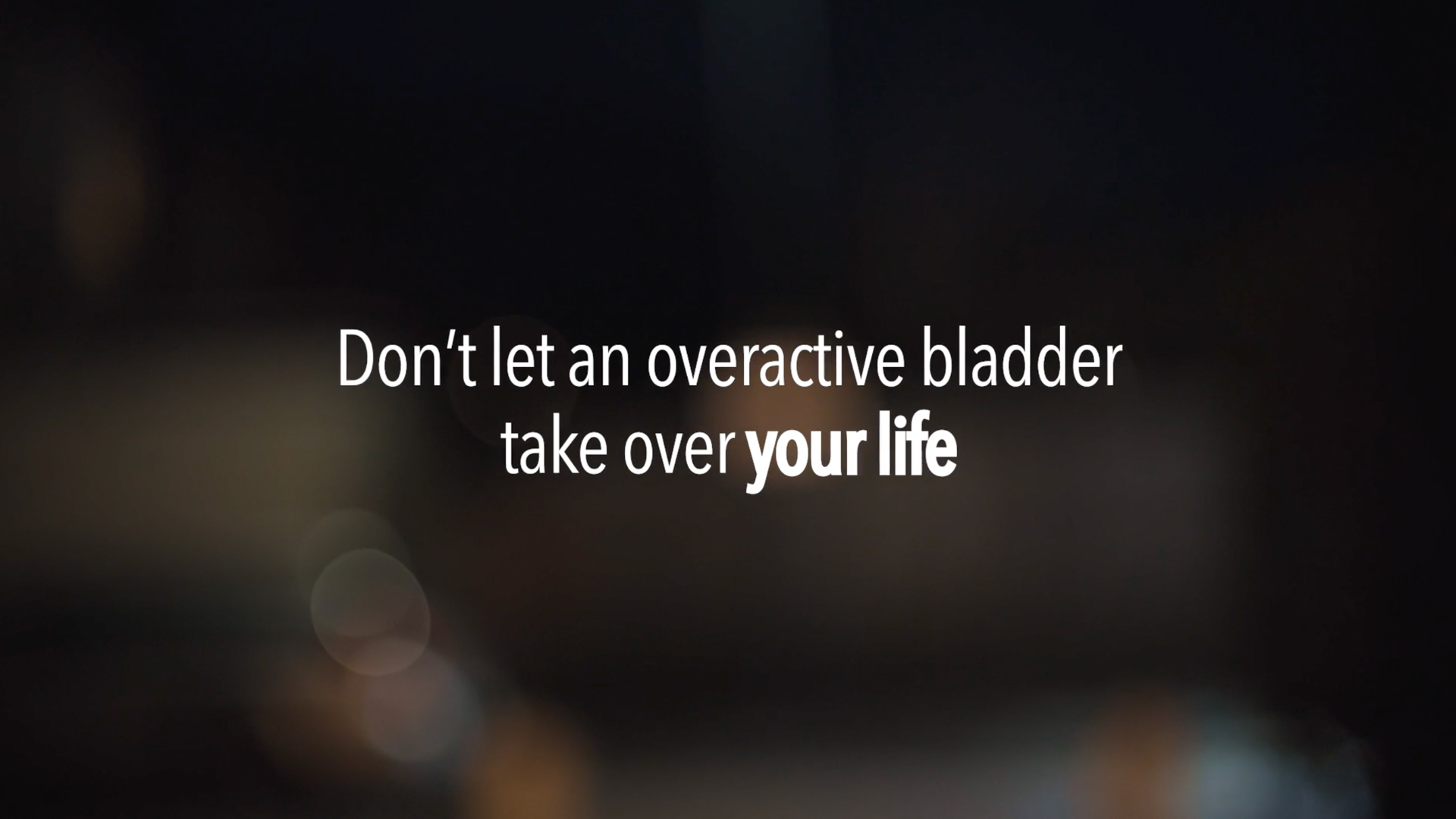
Overactive Bladder (OAB) affects >2 million people over 40 years old in the UK and can be severely debilitating. Balancing the symptoms of OAB; frequency, urgency, night-time urination and incontinence is challenging and can massively impact quality of life.
Despite its commonness, many mistake the symptoms of OAB as fait accompli, simply a result of ageing, and instead of seeking medical intervention, make lifestyle changes to cope.
We devised a campaign to challenge acceptance of OAB symptoms as part of ageing, help undiagnosed individuals recognise their symptoms, and ultimately embolden individuals to seek medical advice.
Our campaign website featured a symptom checker questionnaire, and historical data suggested 70% of people who engaged with the campaign and were symptomatic would seek help. Therefore our key digital engagement measure was questionnaire completion. Pilot data showed a questionnaire completion rate of 12%, therefore our primary goal was to achieve 240,000 website visits. These results would help us achieve our market growth objective (demonstrating increased diagnoses) within six months.
OAB, like many other health conditions, encroaches steadily on people, insidiously becoming ‘part of life’ or ‘something to live with’, rather than a condition worth investigating. However, unlike many other conditions, it is not a matter of life and death.
We wanted to change attitudes with a creative campaign that unmistakably showed the ‘absurdity’ of lifestyle adaptions, conforming and accepting the restrictions OAB places on life, ultimately encouraging people to push for better.
We developed a creative film using humour as a means of cutting through people's ‘acclimatised’ mindsets and encouraging behaviour change. The film followed a day in the life of a professional woman with a novel, surreal, way to deal with her OAB; everywhere she goes, a portable toilet follows her, towed by a genial porter. Each vignette reflected genuine moments of OAB urgency; commuting, presenting at work, walking in the park etc. The film’s narrative was used throughout the campaign, which includes tactics such as Google display ads, Google search ads, Facebook ads, out-of-home posters in service stations and All4 static pause ads.
To avoid audience fatigue, we refreshed our digital ad content four times within a period of 6 months, building on previous learnings to optimise our content and ensure engagement was always prioritised. To reach the full spectrum of patients, individual ads focused on each of the key OAB symptoms. We implemented targeting by age, location, topics of interest and frequently searched keywords, throughout our campaign. Our dissemination tactics, including the creatives and copy, were finetuned and updated throughout the campaign with insights from previous learnings.
Challenges included a schedule that required; a shoot in the UK in January (cold, dark, wet); manufacturing a mobile portaloo; filming nine locations in two days with six hours of usable light. Crew and cast were briefed carefully to ensure their flexibility and goodwill, which proved valuable when production was shifted back a week with two days’ notice to avoid a forecasted snowstorm.
Innovation on a production level for this project was old-school. We created the central prop by purchasing and assembling a real portaloo, stripping out all unnecessary parts (including the loo), and experimenting with multiple means of conveyance, a palette jack proving the most effective, in tandem with Velcro-tape and cable ties. Testing was extensive so the shoot could be conducted safely and to schedule. Despite a limited budget, key scenes of movement were rehearsed ahead of time to ensure no time was lost on the shoot.
In this way, an expansive, ambitious shoot was completed on schedule.
Our combined digital activities achieved 13.7 million impressions, resulting in 304K click-throughs to the campaign website (exceeding the objective of 240,000). This was achieved whilst maintaining a CPC of £0.16, significantly lower than the £0.27 industry benchmark. Our film, ‘The Porter-loo: Living with OAB’, reached 539,883 individuals, with >1 million video plays in 18 days. >162,000 watched the video beyond 15 seconds (6s platform benchmark) and it received >950 reactions, 174 comments and 252 shares.
Given the amount of stigma and sensitivity around a topic like bladder health, these engagement figures – and particularly the fact that, on average, people watched the film more than twice – are a true testament to the creativity and impact of this film. Comments from our viewers spoke volumes: "Brilliant advert and definitely true to many"; "I reckon this little film needs an Oscar or BAFTA. It made me laugh so much, then I turned the sound on, and it made me cry"; "This is so true, I get so very anxious if I have to go anywhere, so I stay at home."
Of those driven to the campaign website, 20.26% continued to complete the questionnaire resulting in 67.6K total completions in the 6-month period. The campaign also won Astellas’ President’s Award for the Established Markets region and, due to its success, is being localised by Astellas affiliates around the world.







